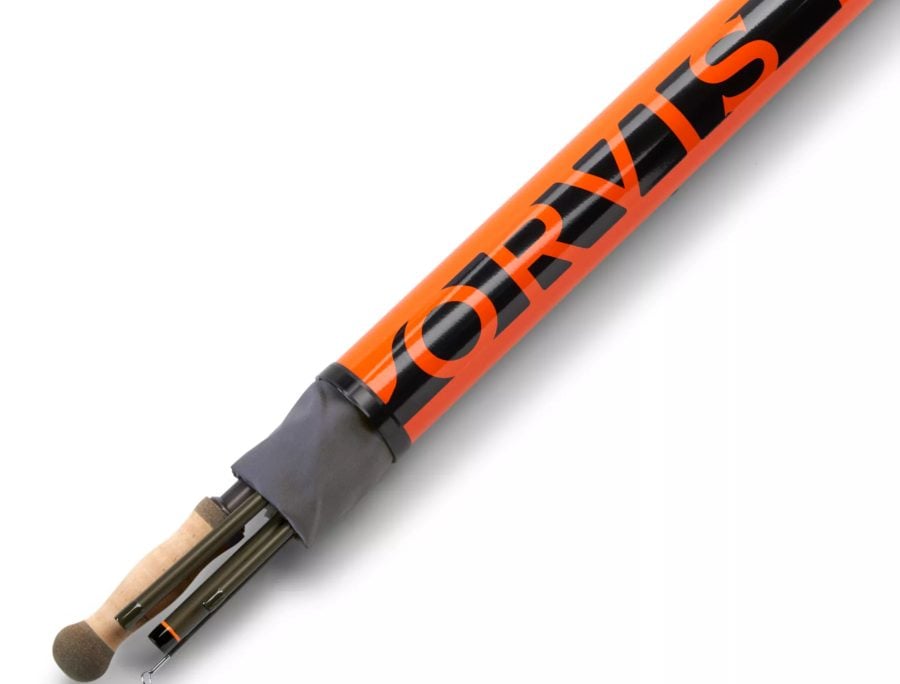MidCurrent Tested and Trusted: Orvis Mission Spey Rods

I am addicted to Spey casting. It’s a strange obsession, as far as fly fishing goes, in that it makes me happy even when I’m not catching fish. There’s something almost spiritual about it, a connection with the river itself. Standing hip-deep in the water with the current flowing past and the sun shining above, I get lost in the natural rhythms of the world. I get lost in the casting. The world narrows into a rhythmic and continuous flow of stepping and casting in a peaceful reflection of the waters movement. It can put me in a trance. Honestly, it’s like fishing Prozac.
But the problem with Spey casting was that I could only do it in certain places during certain times of the year—i.e. when fishing for salmon and steelhead. However, not too long ago I discovered the world of trout Spey, which gave me a way to practice my favorite fishing method wherever and whenever I wanted. Occasional addiction would soon become full-time obsession, that is, once I found the right trout Spey rod. It took some doing, as I went through a selection of different styles and brands, until I discovered the Orvis Mission Trout Spey rod. I’ve been fishing it ever since.
The Perfect Balance
One problem with trout Spey rods is that they’re either complete noodles or stiffer than a moonshine cocktail. The Mission rods, though, seem to slide into the middle ground quite nicely. With a stiffer back bone and heavier base, the Misson is a great rod for making long casts with small streamers and even soft-hackles. But if you’re feeling frisky, it’s got enough oomph behind it to throw larger and heavier streamers without a problem. Designed with the same technology as their Helios line, Misson rods dampen vibration, which loads more energy into each cast so you could probably throw a soaking wet Christmas stocking across the river if you needed to.
The flexibility and sensitivity of the Misson also makes it stand out from the crowd. A lot of other trout Spey rods I’ve used fish kind of feel like cane poles. They’ve got a bit of zip behind them when you’re casting, but on those cold days or when fishing for picky trout and strikes are subtle, you miss out on a lot of fish. The Misson has an ultra-sensitive tip, perfect for picking up on those gentle, cold-water tugs. In addition, the Misson’s flex is fantastic for when you do get into a bigger-than-you-thought-it-was trout. It can handle hard-pulling, long-running fish in heavy current like a champ, offering you plenty of leverage and strength for bringing big ones to net.
A Variety of Flavors
Perhaps the best thing that the Misson Trout Spey rod has going for it is variety. So often in the trout Spey world you’re stuck with either a flimsy 11-foot 3-weight or a too-heavy 13-foot 6-weight, and that’s about it. There is a huge array of Orvis mission weights and sizes. From their 11-foot-4 inch 3-weight which is a fantastic small-stream rod or a perfect option for delivering small bugs on big water, up to their 13-foot 7-weights which are ideal for chucking and ducking with big streamers and can even be used as a steelhead rod. Every rod in the Misson line is perfectly adapted to the task and will do anything you ask of them.
Of course, such a marvelous rod demands a price to match, and with a tag ranging from $800-$900, the Misson certainly isn’t cheap. But if you’re an angler that takes Spey casting as seriously as I do, then the juice is definitely worth the squeeze. Even if you can only afford one or two Misson rods, their adaptability means that with the right weights and size you can swing flies anywhere and everywhere.
My Strange Addiction
I suppose there are a lot worse addictions than Spey casting. I mean, I could be an addict of more dangerous fixes or (gulp) fish with worms. To be honest, I sometimes get frustrated with my trout Spey problem. Once you get into Spey casting, it’s almost impossible to drive by a river without slowing down to peek at the potential runs. You also start dreaming about those peaceful moments of standing in the water, making long casts and swinging flies at the most inopportune moments—like during business meetings or on a date. So maybe the Orvis Trout Spey rods being so great is kind of a bad thing because once you get one, you’ll never be able to kick the habit.











